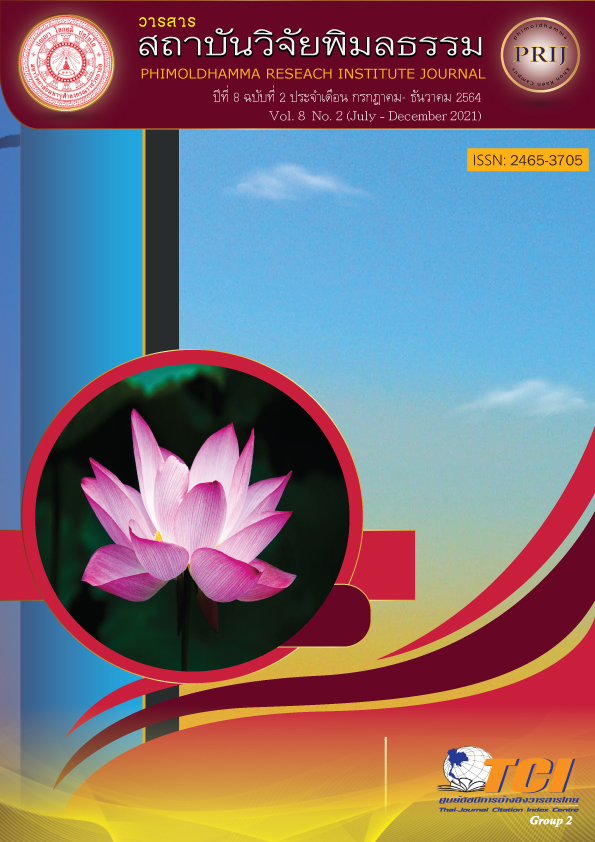Buddha-dhamma Communicative Procedures via Social Media of the Monks in Thai Society
Keywords:
Procedures, Buddha-dhamma Communicative, Social Media, Thai SocietyAbstract
The objective of this research paper is: 1) to study the principles of Buddhist dhamma communication along the lines of Buddhism, 2) to study the patterns of communicating Buddhist dhamma via the social media of monks in Thai society, and 3) to study and analyse the strengths and weaknesses of the process of communicating Buddhist dhamma via the social media of monks in Thai society. The research is both documentary and based on interviews.
The research results showed that:
1. Study the principles of Buddhist dhamma communication along the lines of Buddhism. It was found that the principles of Buddhist dhamma communication along Buddhist lines are comprised of 1. Speaking or indicating that truth which is most sublime. 2. Prevention and correction of misunderstandings. 3. Surveying opinion.
2. Study the patterns of communicating Buddhist dhamma via the social media of monks in Thai society. It was found that the patterns of communicating Buddhist dhamma via the social media of monks in Thai society are made up of visual, audio and audio-visual formats.
3. Study and analyse the strengths and weaknesses of the process of communi cating Buddhist dhamma via the social media of monks in Thai society. The strength is that it enables information to spread around the world, better than holding a seminar in a limited space in a room. If distributed in the media, it will spread. The weakness is that teaching Buddhism online is not the same as receiving it in a lecture close to people. It is only for those who are genuinely interested. People who are not interested will receive no benefit.
References
เกษม อุทยานิน. (2559). สื่อสารมวลชน และการประชาสัมพันธ์. กรุงเทพฯ: เลี่ยงชียง.
เจษณี สุขจิรัตติกาล. (2560). มารยาทและจริยธรรมในเครือข่ายสังคมออนไลน์. กรุงเทพฯ: เรือนแก้ว.
พระมหาธนิต สิริวฑฺฒโน. (2557). จารึกอโศก. (พิมพ์ครั้งที่ 4). พระนครศรีอยุธยา: ธรรมสภา.
พระครูสุนทรธรรมโสภณ. (2561). ยุทธศาสตร์การทางานเผยแผ่ของคณะสงฆ์ไทย. กรุงเทพฯ: ทวีพิมพ์ดี.
พระจักรพงศ์ วิสุทฺธสีโล. (2558). การใช้เทคโนโลยีกับการเผยแผ่พระพุทธศาสนา. กรุงเทพฯ: ธีระฟิลม์ และไซเท็กซ์ จำกัด.
พระธรรมกิตติวงศ์ (ทองดี สุรเตโช). (2558). คำวัด 2. กรุงเทพฯ: เลี่ยงเชียง.






